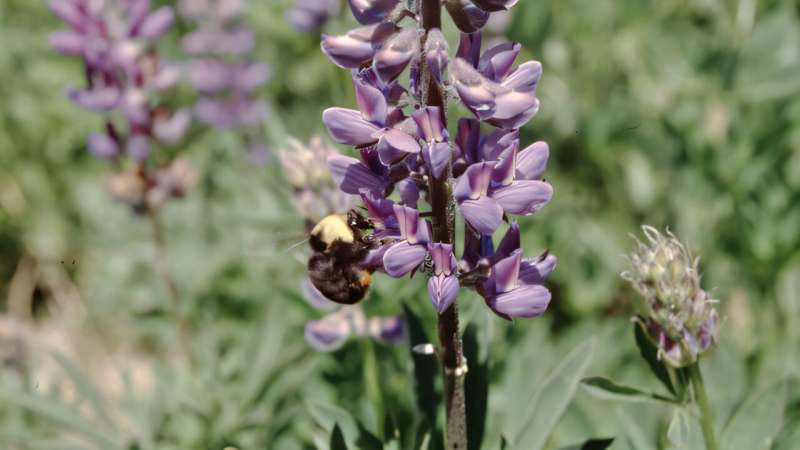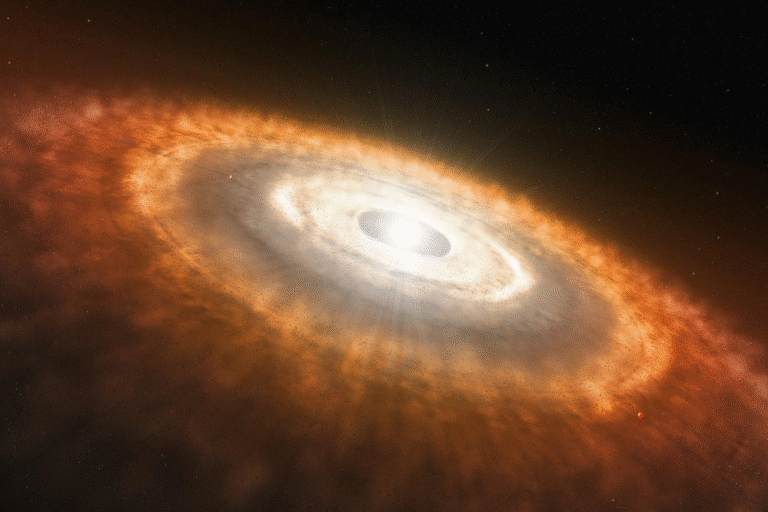The Franklin Bumble Bee’s Fall: How a Genetic Weakness Sealed Its Fate Long Before Humans Arrived

A new study has revealed that one of North America’s rarest pollinators, the Franklin bumble bee (Bombus franklini), was likely headed toward extinction long before modern human activities began to take their toll. Using DNA extracted from preserved specimens, scientists discovered that this tiny bee’s genetic fragility—not pesticides, disease, or human disturbance—was the main reason behind its decline.
This finding changes the way scientists think about extinction: not every species’ downfall can be pinned entirely on human activity. In some cases, nature itself, combined with ancient genetic limitations, sets the stage long before humans appear.
The Rare Bumble Bee That Vanished
The Franklin bumble bee was once found only in a small region of southern Oregon and northern California, particularly in Jackson, Douglas, and Josephine counties in Oregon, and Siskiyou and Trinity counties in California. Its range—roughly 13,300 square miles—was one of the smallest known for any bumble bee in North America.
Despite its narrow range, the bee was once fairly common. Researchers recorded 94 sightings in 1998, but numbers dropped sharply afterward: 20 in 1999, 9 in 2000, 1 in 2001, 20 in 2002, 3 in 2003, none in 2004–2005, and a final confirmed sighting in 2006. Since then, no verified individuals have been seen, and it is now considered functionally extinct.
The Genetic Study That Looked Back in Time
The new study, published in the Proceedings of the National Academy of Sciences (PNAS) in 2025, used a unique approach called museum genomics—analyzing genetic material from preserved specimens collected over decades. The team extracted DNA from 25 female bumble bees collected between 1950 and 1998, giving them a rare genetic window into the past.
Their results were clear: the Franklin bumble bee had extremely low genetic diversity. In genetics, diversity is essential for resilience—it allows species to adapt to new diseases, environmental changes, and stress. Without it, a population becomes fragile and less capable of surviving shocks.
The researchers found long stretches of homozygosity (where both copies of a gene are identical), a strong sign of inbreeding. Some individuals even had entire chromosomes showing these patterns, suggesting that the population had been genetically bottlenecked for a very long time.
A Decline That Began Thousands of Years Ago
The team reconstructed the bee’s demographic history—essentially its population size over time—using coalescent modeling techniques. They found that the Franklin bumble bee’s population began to shrink thousands of years ago, around the late Pleistocene, long before agriculture or industrial activity.
The population continued to decline gradually through the centuries, and the downward trend accelerated in the last 400 years. Environmental pressures such as droughts, wildfires, and shifting climate patterns likely played a role. These are natural events that the bee’s ancestors had always faced, but over time, its dwindling genetic diversity meant it could no longer bounce back.
What’s striking is what the researchers didn’t find. There was little genetic evidence linking the species’ disappearance to pesticides, pathogens, or introduced diseases—factors that often dominate the conversation about modern pollinator decline. The data suggest that by the time human influences began to mount, the Franklin bumble bee was already too genetically fragile to recover.
Why This Matters for Conservation
Bumble bees aren’t just charming insects with fuzzy coats—they are essential pollinators for wildflowers and many food crops that humans rely on. Their ecological importance makes the Franklin bumble bee’s story a cautionary one.
This case shows that conservation biology can’t focus only on modern threats like habitat loss or pesticide exposure. Some species might carry ancient vulnerabilities written into their DNA. When a species’ genetic diversity is already low, even small additional stresses—like a single bad drought or disease outbreak—can push it over the edge.
Researchers emphasize that understanding long-term genetic trends is just as important as monitoring short-term environmental changes. The Franklin bumble bee’s genome, preserved in museum drawers for decades, offered exactly that kind of deep insight.
The Value of Museum Collections
This study highlights the growing importance of museum collections in modern conservation. By analyzing genetic material from specimens collected long before the species disappeared, scientists can reconstruct the population’s past and identify patterns invisible from field observations alone.
These collections also allow researchers to test competing hypotheses. In this case, earlier speculation about disease or pesticide exposure could be ruled out because the genetic evidence pointed elsewhere.
Museum genomics is now emerging as a powerful tool to assess extinction risk—not just for bees, but for any species preserved in natural history archives. As DNA sequencing becomes cheaper and more precise, old specimens may hold the key to understanding how biodiversity changes across centuries.
The Broader Context: Bumble Bees in Decline
The Franklin bumble bee isn’t alone in its struggle. Bumble bee populations around the world are facing severe declines. Species like the Rusty patched bumble bee (Bombus affinis) in North America and Bombus dahlbomii in South America are also in trouble.
The causes often include habitat destruction, climate change, disease spillover from commercial bees, and pesticide exposure. However, the new research adds another layer: evolutionary vulnerability.
Low genetic variation can arise naturally in species with small, isolated populations—especially those limited to narrow ecological niches, like high-altitude or coastal habitats. Once diversity is lost, it’s hard to regain. That makes small-ranged pollinators like Franklin’s bumble bee particularly fragile.
Lessons for the Future
Understanding that some extinctions begin long before humans arrive doesn’t let us off the hook—it adds responsibility. If a species is already genetically weak, then protecting its habitat and minimizing added stressors becomes even more urgent.
For scientists and conservationists, this means paying attention to population genetics early, before numbers crash. Genetic monitoring can reveal whether a species is losing diversity, giving conservation programs a chance to act before it’s too late.
For the general public, it’s a reminder of how complex nature’s balance is. The disappearance of a single bee might seem minor, but pollinators like Franklin’s bumble bee play a massive role in maintaining both wild ecosystems and human food security.
Even if Franklin’s bumble bee is gone forever, the lessons it leaves behind can help protect others. The researchers involved—spanning institutions like the University of Hawai‘i at Mānoa, the University of California, Davis, and others across the U.S.—hope their findings will guide more precise conservation efforts for pollinators worldwide.
Final Thoughts
The Franklin bumble bee’s story is both fascinating and sobering. It reminds us that extinction isn’t always a sudden, modern tragedy—it can be the slow echo of ancient vulnerabilities finally catching up with a species. By combining genetic science, museum collections, and ecological awareness, researchers are rewriting what it means to understand extinction.
As conservation efforts continue, the Franklin bumble bee stands as a powerful example of why studying history—right down to the DNA level—matters for the future of life on Earth.





